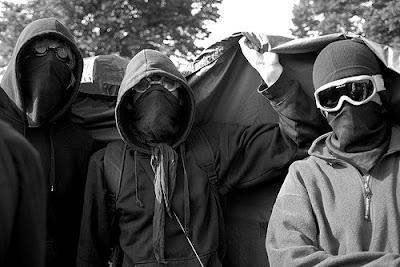I've challenged myself to reading all of Agatha Christie's mysteries in one year starting with The Mysterious Affair at Styles and ending with Curtain: Poirot's Last Case.
Thursday, September 23, 2010
Announcing Another BLOG!
Saturday, September 18, 2010
Happy Birthday Mom!

Wednesday, September 15, 2010
Happy 120th Birthday Agatha Christie!
Saturday, September 11, 2010
Hello Miss Marple!
Thursday, September 2, 2010
Debbie Reynolds Plays the CNE!?!?!?

Yes, entertainer Debbie Reynolds played the Canadian National Exhibition bandshell tonight. And if that fact alone wasn't shocking enough, it cost me all of $5 to see. There was a nice mix of old standards and Hollywood reminiscences to satisfy even the passing fan. While I enjoyed it, her performance just didn't have the zing I expected from an old showbiz pro.
Sunday, August 29, 2010
Nancy Drew, What's That Behind You?

Saturday, August 28, 2010
Marple: The Secret of Chimneys

Star Wars Uncut

Tuesday, August 24, 2010
Best Cover Art EVAH!


Monday, August 23, 2010
The Big Four

I keep posting this after every round of short stories but, I'm so glad to be reading another novel. I much prefer immersing myself in a full-length mystery and not being tossed about with abrupt changes in characters, settings and style. That said, I do like the Harley Quin stories and try to savour each one of them.
Monday, July 19, 2010
The Man in the Brown Suit
 The Man in the Brown Suit is a fun mystery-adventure, and one of the better stories I've read so far. It kept me guessing, and then second guessing then returning to my original theory and back and forth. The funny thing is, once you know whodunnit and why, you realize that Ms. Christie basically told you right from the beginning.
The Man in the Brown Suit is a fun mystery-adventure, and one of the better stories I've read so far. It kept me guessing, and then second guessing then returning to my original theory and back and forth. The funny thing is, once you know whodunnit and why, you realize that Ms. Christie basically told you right from the beginning. Wednesday, July 7, 2010
Vintage Covers

Even though I already own a copy of The Man in the Brown Suit, I couldn't resist purchasing this copy from a used book store because the cover is so completely of its time. The copy I'm reading has a timeless yet very 1982 look about it, and this edition of The Man in the Brown Suit is completely and utterly 1968.
Tuesday, June 29, 2010
Used Bookstore Treasures


Monday, June 28, 2010
Beware of People with Accents
I've finally finished a cycle of short stories and am glad to be starting the next novel, The Man in the Brown Suit. I'm behind on my reviews and will post some soon, but for now I'll give you a few brief impressions.
Poirot Investigates and Poirot's Early Cases were uniformly good: engaging but brief, clever yet not so clever that the readers feels cheated. The first Harley Quinn story, included in Master Pieces in Miniature: The Detectives, was very promising and I'm itching to read more of them.
The rest of the stories I read were contained in either Masterpieces of Mystery and the Unknown or While the Light Lasts and Other Stories. A couple of the lesser known short stories could charitably be called The Case of the Vaguely Foreign Boogie Man, but mostly the stories I read seem to be cautionary mysteries for credulous youth with a thirst for adventure.
It is unfair of me to judge the collection While the Light Lasts and Other Stories after only reading a few of the works. But, so far I understand why most of these stories remained unpublished in book form for decades. I am not saying that they are bad, they just aren't Agatha Christie's best works.
Sunday, June 6, 2010
Short Story Round-Up!

I've competed reading the first batch of Poirot short stories and I'm glad I put The Murder on the Links aside to do so. First off, based only on what I've read so far, it seems that agathachristie.com was wrong: Hercule Poirot's Early Cases should be read before Poirot Investigates. Or at least The Affair at the Victory Ball should be read before Poirot Investigates at is references stories contained in Poirot's Early Cases.
Tuesday, May 25, 2010
A little snag...

Even if I haven't been posting, I'm still reading but I'm a little behind. By the end of May I should have read at least 4 novels and 2 books of short stories. I'll be lucky if I complete 3 books period. This is a failure of my own making and there is really nothing and no one to blame but my procrastination, YoVille and my tendencies toward obsessive compulsion.
Wednesday, May 12, 2010
The Secret Adversary

Tuesday, May 11, 2010
The Mysterious Affair at Styles

Memory is a funny thing: when I began reading The Mysterious Affair at Styles I thought I would remember who the murderer was. I actually remembered who Agatha Christie wanted me to think was the murderer, and despite being able to recall a few significant plot points, I was genuinely please to have overestimated myself. This proved to me that despite having already read this book and watching the ITV David Suchet television adaptation, Christie still delivers a good read and a few surprises.
Monday, May 10, 2010
Let the Reading Begin!
Tuesday, May 4, 2010
The NEW Facebook Sucks
Monday, May 3, 2010
The Horror of Lists
Sunday, May 2, 2010
Every Trip Needs an Itinerary






